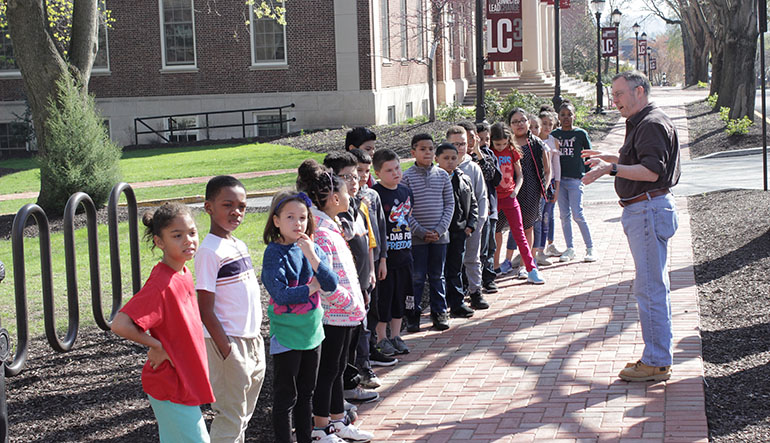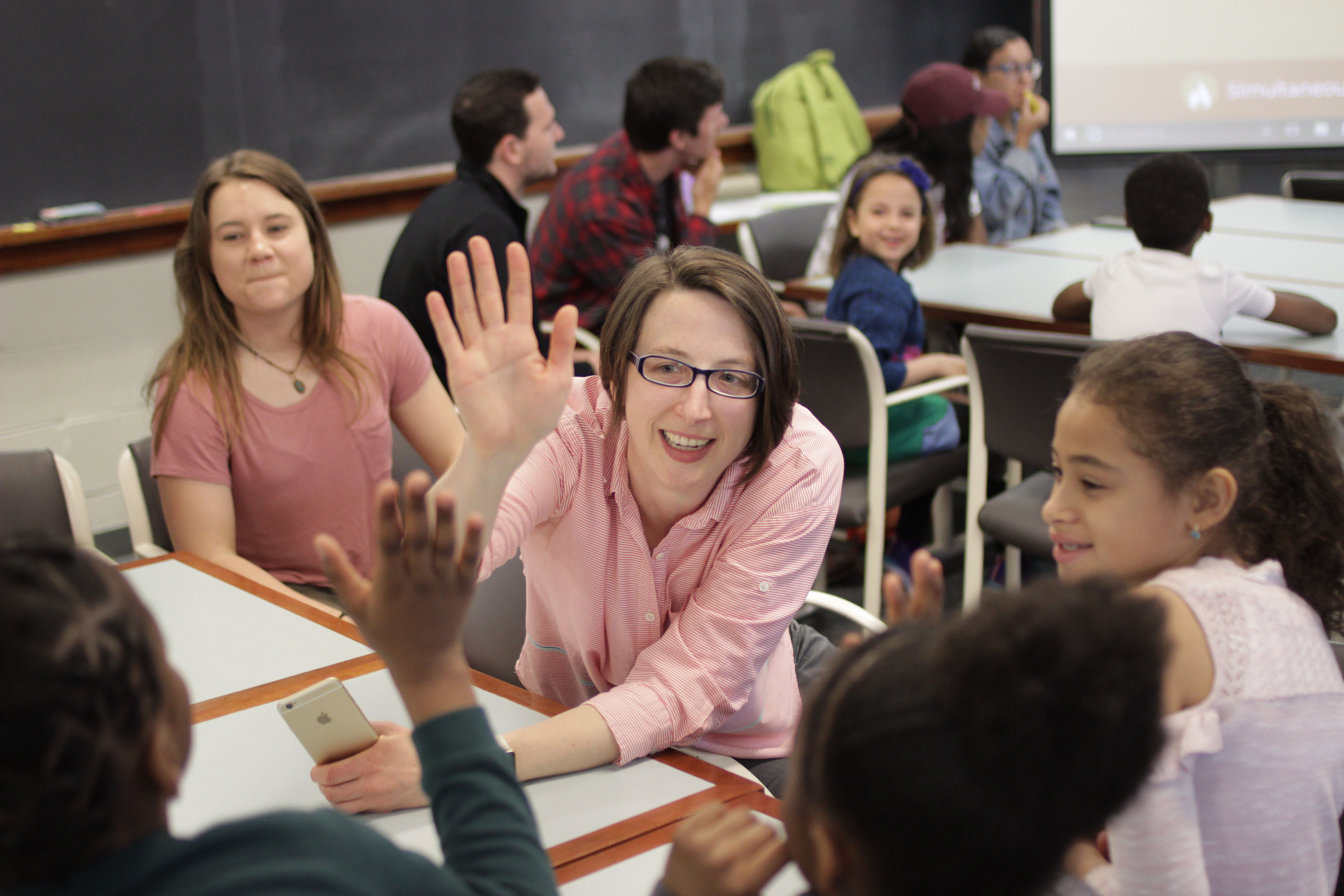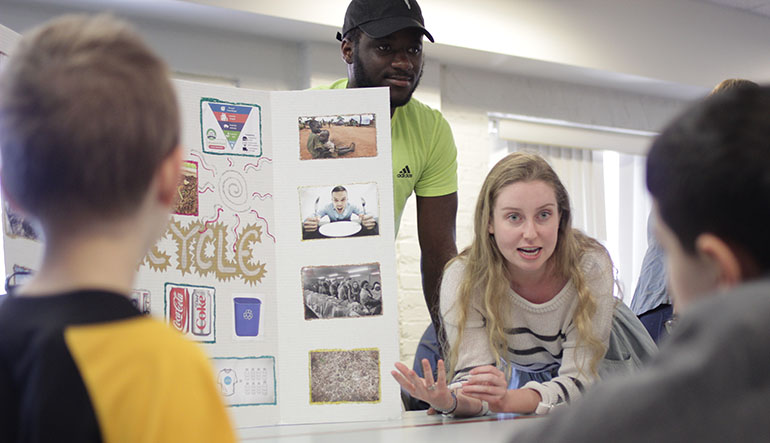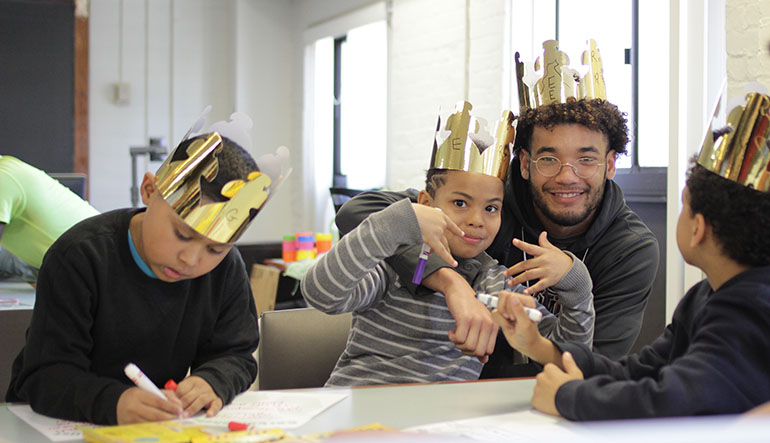Lafayette students help local third-graders learn to be energy conscious
 By Stephen Wilson
By Stephen Wilson
It takes 300 hours of electricity, which is about 12 days, to make one simple cotton T-shirt. If that doesn’t sound like a lot of energy, add this: 700 gallons of water, 1/4-pound of fertilizers, and 1.2 pounds of fossil fuels.
Translating these energy ideas so third-graders can understand them is no easy task, but one that students in a science and technology in a social context class were charged with.
In this case, one hour of electricity was equivalent to one kernel of cheddar popcorn.
Julia Nicodemus, assistant professor of engineering studies, invited third-graders from Paxinosa Elementary to her class to learn what energy is, why we should care about it, how it impacts climate change, and how to reduce our usage.
The day started off with a lesson on those first three topics. To ensure that it stuck, teams of students then took a quiz, which became a boisterous moment filled with cheers and high fives as they answered the questions correctly.
Elementary students then rotated to tables where they learned how to reduce heat use in their homes, the life cycle of a cotton T-shirt, what could be recycled, and how to improve their carbon footprint.
To help make these ideas clear, the college students planned lessons that involved moving popcorn, earning crowns, throwing items into bins, and answering household questions.
“This is a great opportunity for Lafayette students to practice communicating some very important ideas,” says Nicodemus, “and to participate in a community-based learning project. Plus, they get to have fun with these adorable kids.”

All year long the Center for Community Engagement piloted a program at Cheston Elementary designed to enhance educational outcomes and bring together Lafayette faculty, public school teachers, and students from both schools. Today marks the first program with Paxinosa.
The school is designated a United Way Community School, which means it is focused on leveling the playing field for students who face more barriers to success. The school becomes a hub of services, including on-site medical and dental, food banks, and clothing closets, that can help prevent issues that distract from learning.
“I am speechless,” says Jeanine Stanilious, the community school coordinator at Paxinosa. “The hands-on activities will help make this a trip they never forget.”
Third-grade teacher Tina Joynes agrees. “I jumped at the opportunity to come here,” she says. “The lessons tie into our school science fair, and my students have an opportunity to see a college campus, start to think about their future goals, and meet some role models.”
One such role model is Tre Jordan, who is decked out in his football hoodie. He attended Paxinosa for a few years before moving to Atlanta, Ga. When he shares his Paxinosa roots, the students are in awe.
Soon he too is wearing a crown as a king of energy saving.

 By Stephen Wilson
By Stephen Wilson

